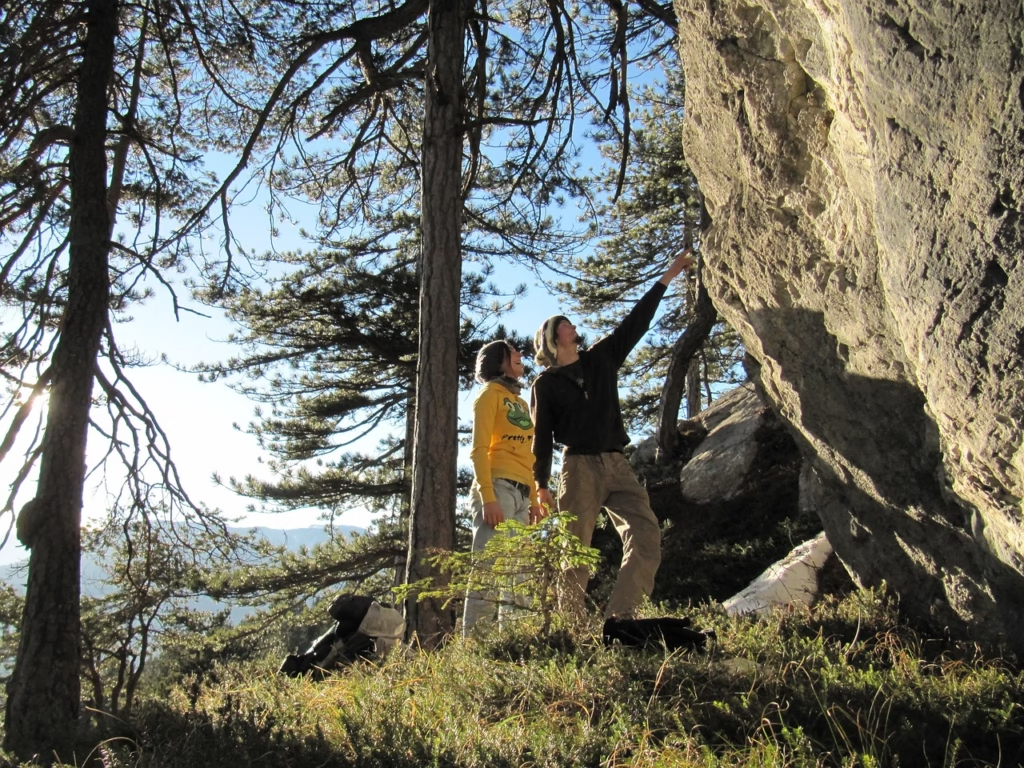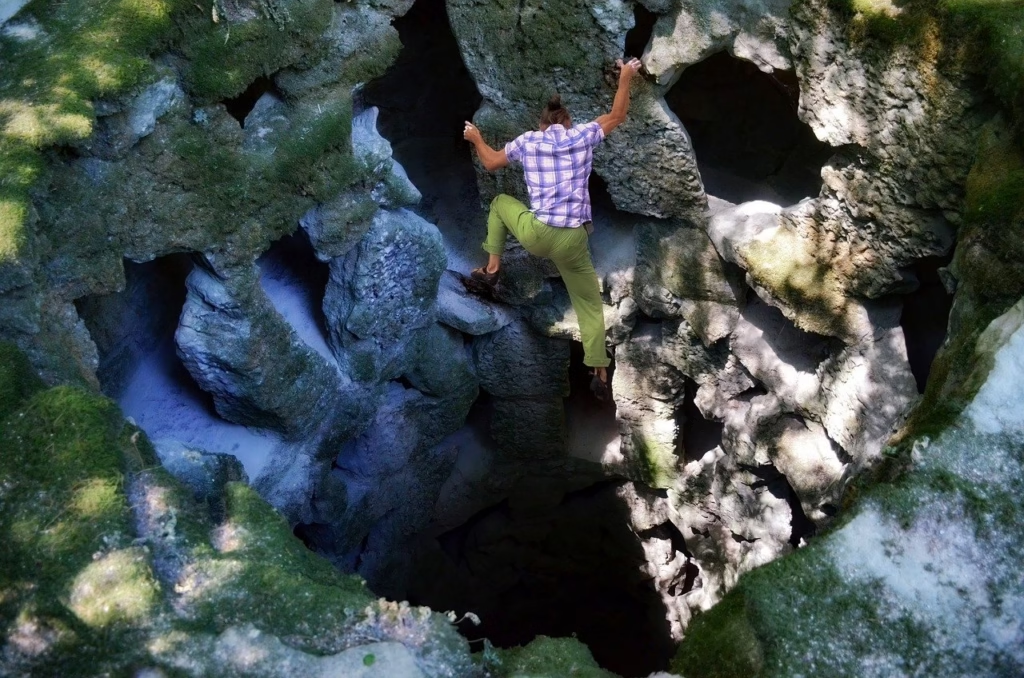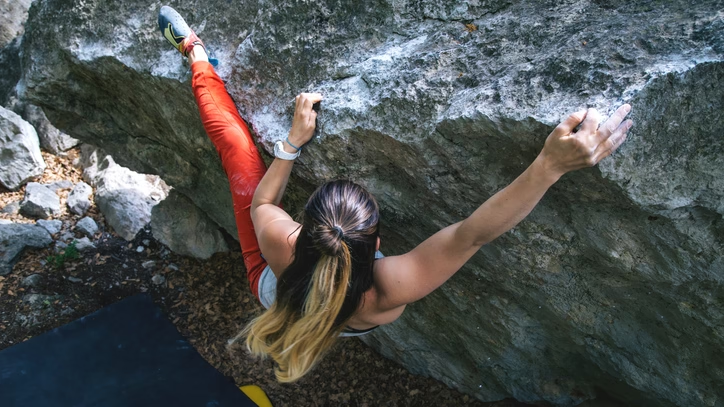Fontainebleau bouldering is one of the most iconic climbing experiences in the world. Just an hour south of Paris, the Fontainebleau forest is home to over 20,000 sandstone bouldering problems, attracting climbers of all levels. It is not just the sheer quantity of climbs that makes Fontainebleau special—it is the unique friction, technical nature, and historic significance of its boulders.

I first visited Fontainebleau with high expectations, but nothing could prepare me for the sheer difficulty of even the lower-graded problems. What looked simple from the ground often required precise footwork, delicate balance, and complete trust in the rock’s texture. The slopers were unforgiving, the mantles demanded full commitment, and the grading felt stiff compared to other places I had climbed. After a few frustrating attempts on a supposedly “easy” blue circuit, I quickly realized that brute strength wouldn’t be enough—Fontainebleau demands technique, patience, and respect.
Table of Contents
Why Fontainebleau is One of the Best Bouldering Destinations
- World-Class Climbing – Fontainebleau has been a training ground for some of the world’s best climbers for decades.
- Variety of Problems – From technical slabs and powerful overhangs to dynamic dynos and compression moves, there’s something for every style.

- Circuit System – Fontainebleau pioneered the color-coded circuit system, allowing climbers to train progressively.
- Year-Round Climbing – Spring and autumn offer the best conditions, but with the right strategy, climbing in Fontainebleau is possible year-round.
- Rich Climbing History – The forest has been a center of European climbing since the early 20th century, influencing modern bouldering styles.
Fontainebleau Bouldering Areas and Must-Climb Problems
Fontainebleau is divided into many climbing areas, each offering something different. Here are some of the top bouldering spots and their standout problems.
Bas Cuvier – The Classic Area
One of the most famous Fontainebleau bouldering areas, Bas Cuvier has a high concentration of hard problems close together, making it perfect for projecting.
- La Marie Rose (6A/V3) – This is the first-ever 6A in Fontainebleau, a true test of technical footwork and balance. The crux is a high step-up onto polished footholds, where trusting friction is key.
- L’Aérodynamite (7B+/V8) – A powerful problem with a dynamic throw to a sloper. It requires good coordination and an aggressive approach.
- Le Carnage (7B/V8) – A high tension traverse that forces you to use heel hooks and core engagement to stay on.
I spent an entire session just trying to trust my feet on La Marie Rose. The movement is subtle but precise, and any hesitation means failure. It was a reminder that Fontainebleau grades don’t rely on power—they demand technique and commitment.
Franchard Isatis – A Perfect Mix of Styles
This area is great for groups with mixed skill levels, offering a combination of easy circuits and elite test pieces.
- Angle Ben’s (7A/V6) – A classic Fontainebleau arête that forces you to climb slowly and deliberately, with minimal holds and plenty of body tension.
- Surplomb de la Mee (6C/V5) – Features a big move to a sloper, requiring a controlled yet powerful deadpoint.
- El Poussah (7A/V6) – A challenging compression problem where squeezing the boulder and engaging the core is key.
I underestimated Angle Ben’s—the lack of positive holds forced me to engage full-body tension on nearly every move. The final reach to the top felt impossible at first, but adjusting my hip position made all the difference.
Apremont – A Less Crowded Alternative
Apremont is a sprawling area with a variety of circuits, offering a less polished experience than the more popular spots.
- La Baleine (7A/V6) – A classic mantle problem that demands a strong press-out and good shoulder mobility.
- Pilier du Désert (6B/V4) – A delicate face climb with small edges and an intimidating top-out.
- Gargantoit (7C/V9) – A burly roof problem with big compression moves and aggressive toe hooks.
The top-out on La Baleine was one of the most committing moves I’ve done—there’s a moment where you have to fully commit or risk falling onto your back.
Roche aux Sabots – Ideal for Beginners
One of the best areas for first-time visitors, with plenty of low-graded circuits and soft landings.
- The Blue Circuit – A fantastic introduction to Fontainebleau movement, covering a variety of climbing styles.
- La Défroquée (6A/V3) – A fun, slightly overhanging problem with positive holds and an easy top-out.
- La Lévitation (5C/V2) – Requires a dynamic jump to a jug, testing coordination and commitment.
Techniques for Fontainebleau Bouldering
Fontainebleau climbing is unique, requiring specific techniques that differ from other climbing areas. Here’s what you need to master:
✔ Precise Footwork – Poor foot placement equals instant failure. Small adjustments make a huge difference.
✔ Mantling Strength – Many problems end with a mantle, so train those pressing movements.
✔ Body Positioning – Instead of relying on power, focus on shifting weight efficiently.
✔ Sloper Strength – Expect rounded holds with minimal edges. Open-hand grip strength is crucial.
✔ Patience and Problem-Solving – Fontainebleau climbing is like a puzzle—rushing won’t help.

Planning Your Bouldering Trip
How to Get There
- By Train: Take a train from Paris Gare de Lyon to Fontainebleau-Avon, then take a bus or taxi to the climbing areas.
- By Car: Renting a car is the best option to explore multiple areas in one trip.
Where to Stay
- Camping: La Musardière is the best climber-friendly campsite.
- Hotels & Airbnbs: Plenty of options in Fontainebleau and Milly-la-Forêt.
Best Time to Visit
- Spring (April–June) and Autumn (September–November) offer the best conditions.
- Avoid summer, as heat makes the rock too slick for good friction.
Fontainebleau bouldering is an essential experience for any climber. The sandstone demands precision, technique, and creativity, making every ascent a rewarding challenge. Whether you’re a beginner or pushing into the 8th grade, Fontainebleau will test your skills like no other place.
FAQs
Is Fontainebleau good for beginners?
Yes! Areas like Roche aux Sabots and the Yellow/Orange circuits are perfect for beginners.
What gear do I need for Fontainebleau bouldering?
A crash pad, climbing shoes, chalk, and a brush to keep holds clean.
Can you climb in Fontainebleau year-round?
Yes, but avoid wet rock as sandstone is fragile when damp.
Is Fontainebleau only for experienced climbers?
Not at all—there are problems for every level, and the circuit system helps beginners progress.
What is the hardest problem in Fontainebleau?
No Kpote Only (9A) is currently the hardest boulder in Fontainebleau, first climbed in 2019.

